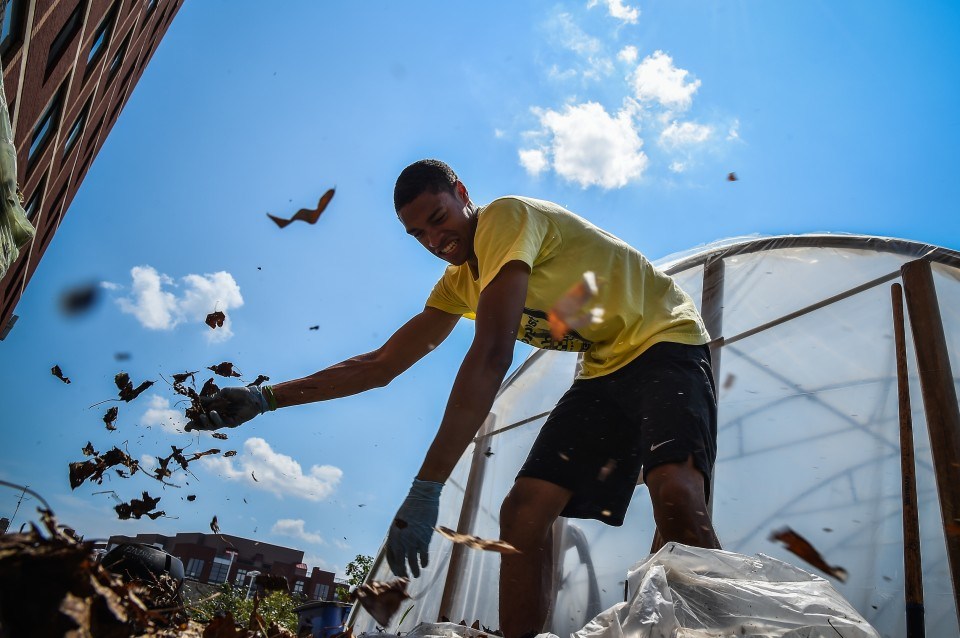Chad Frischmann is the vice president and research director at Project Drawdown.
Many of us have had the experience of opening the refrigerator door, reaching to the back and pulling out the remains of a dinner spoiled and gone to waste. No one likes to waste food, and the negative emotions we feel when we do stem from a variety of sources.
What may not come immediately to mind, however, is food waste’s impact on the climate. According to the U.N. Food and Agriculture Organization, 30 percent of food is wasted globally across the supply chain, contributing 8 percent of total global greenhouse gas emissions. If food waste were a country, it would come in third after the United States and China in terms of impact on global warming.
Carbon dioxide, methane, nitrous oxide and hydrofluorcarbons (fluorinated gases used in refrigeration) are produced and emitted from food production to our refrigerators. And don’t forget all the metal cans, plastic bags and cardboard boxes our food comes in. By throwing away half a lasagna, half of the emissions that resulted from producing and processing, packaging, shipping, storing, picking up and cooking are also wasted.
It turns out reducing food waste is one of the most important things we can do to reverse global warming. Project Drawdown’s team of researchers ranked solutions to global warming; to our surprise, we discovered that cutting down on food waste could have nearly the same impact on reducing emissions over the next three decades as onshore wind turbines. More than 70 billion tons of greenhouse gases could be prevented from being released into the atmosphere. It represents one of the greatest possibilities for individuals, companies and communities to contribute to reversing global warming and at the same time feed more people, increase economic benefits and preserve threatened ecosystems.
Most food waste worldwide occurs when food is left in the field. But food is not wasted the same way in every part of the world. In high and medium-income countries, 40 percent of food waste occurs in markets and by consumers. In low-income countries, food is rarely wasted by households; instead, 40 percent is lost during the post-harvest and processing stages, usually because of poor infrastructure and the lack of efficient storage technology.
Understanding where along the supply chain waste happens provides opportunities for effective solutions to be implemented. In high and medium-income countries, changing behaviors is paramount. Make conscientious decisions to purchase what we intend to eat and eat what is purchased. Embrace “ugly food” — fruits and vegetables that are blemished and not perfectly shaped but are perfectly delicious and nutritious. Properly store, use and share leftovers.
These decisions sends signals to markets, which results in lower demand along the chain and reduces emissions from storage, transportation, packaging, processing and production. Wholesalers, retailers and restaurants can also play a significant role. Suppliers and groceries using clear, standardized “use by” and “best by” labelling, for example, can allow consumers to better understand the peak freshness of products and avoid unnecessary waste. Restaurants can offer flexible portion sizes, provide fewer menu items and encourage leftovers to be taken home.
In low-income countries where most food is lost before getting to market, knowledge exchange, education and investment in improved technology can cause a dramatic shift in wastage. Better information can help prevent producers from generating more food than can be consumed, and proper infrastructure can allow food to reach markets and households in need.
Prevention is the most substantive solution to reducing food waste, but “waste-benefit” solutions such as composting or anaerobic digesters are beneficial last resorts for food that cannot be eaten or redistributed to hungry populations. Project Drawdown’s modeling showed that worldwide implementation of composting can reduce emissions by 2.3 billion tons over the next 30 years. Food waste that decomposes in landfills releases methane, a greenhouse gas that is at least 28 times more potent than carbon dioxide. Wasted food that is composted can be used as a fertilizer on cropland, improving soil health and productivity. Anaerobic, or “methane”, digesters, on the other hand, convert methane produced from decomposition into electricity, helping to shift away from fossil fuel-based energy.
Project Drawdown estimates that as population growth, economic development, food consumption and waste continue to grow, the total food produced worldwide would need to increase by 107 million tons annually by 2050. This level of production would require converting more than a billion acres of forests and grassland into farmland over the next 30 years, resulting in the release of approximately 84 billion tons of carbon dioxide equivalent into the atmosphere. Additional emissions across the supply chain, from agricultural production to our refrigerators, would also be generated.
By reducing food waste today, we can redirect what would be wasted to feed hungry people, and we can avoid the production of excess food. When adopted in parallel with other solutions like switching to plant-rich diets and supply-side agricultural production solutions like silvopasture, Project Drawdown estimates that enough food could be produced to feed the entire world a healthy diet from now to 2050 without converting any forests or grasslands to farmland.
The climate impact of the food system may come as a surprise to many people. Of the top 20 solutions, out of the 80 compiled by Project Drawdown, eight relate directly to the food system. For comparison, only five have to do with electricity generation. While we need all 80 solutions to be implemented in parallel, the decisions we all make every day on the food we produce, purchase and consume is perhaps the single most important contribution an individual can make.
This was produced by The WorldPost, a partnership of the Berggruen Institute and The Washington Post.





